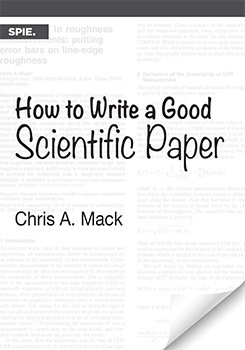|
Whenever a manuscript is submitted to the Journal of Micro/Nanolithography, MEMS, and MOEMS (JM3), the manuscript first goes to me, the Editor-in-Chief. And the first thing I do is read the cover letter that accompanies the manuscript. Thus, the cover letter creates the first impression that I have of the manuscript. Is this important? Of course I think it is, but let me explain why the author(s) should think it is important as well. 9.1 The Purpose of the Cover Letter When I look at a submission, my first decision is whether I think it would be productive for the manuscript to go through the peer-review process or if it should be declined without review. The cover letter gives me the information I need to make this first important assessment (or at least it should). If I believe the manuscript merits review by JM3, my next choice is which senior editor to send it to, based on a match of editor expertise to paper topic. The senior editor will then repeat my exercise, deciding whether to decline without review or, if not, which associate editor to assign it to. Finally, the associate editor will again read the cover letter and could again decide to decline without review. If the associate editor believes the material merits review, he or she must find the right reviewers for the manuscript. Each editor might look at the full manuscript and may even read it fully and carefully. But it is the cover letter that is the first and most important indicator that each editor looks at when making these decisions. |
|
|
-
Journals
- Advanced Photonics
- Advanced Photonics Nexus
- Biophotonics Discovery
- Journal of Applied Remote Sensing
- Journal of Astronomical Telescopes, Instruments, and Systems
- Journal of Biomedical Optics
- Journal of Electronic Imaging
- Journal of Medical Imaging
- Journal of Micro/Nanopatterning, Materials, and Metrology
- Journal of Nanophotonics
- Journal of Optical Microsystems
- Journal of Photonics for Energy
- Neurophotonics
- Optical Engineering
- Photonics Insights
- Ebooks
CITATIONS
Beryllium
Microelectromechanical systems
Microopto electromechanical systems
Fluctuations and noise


